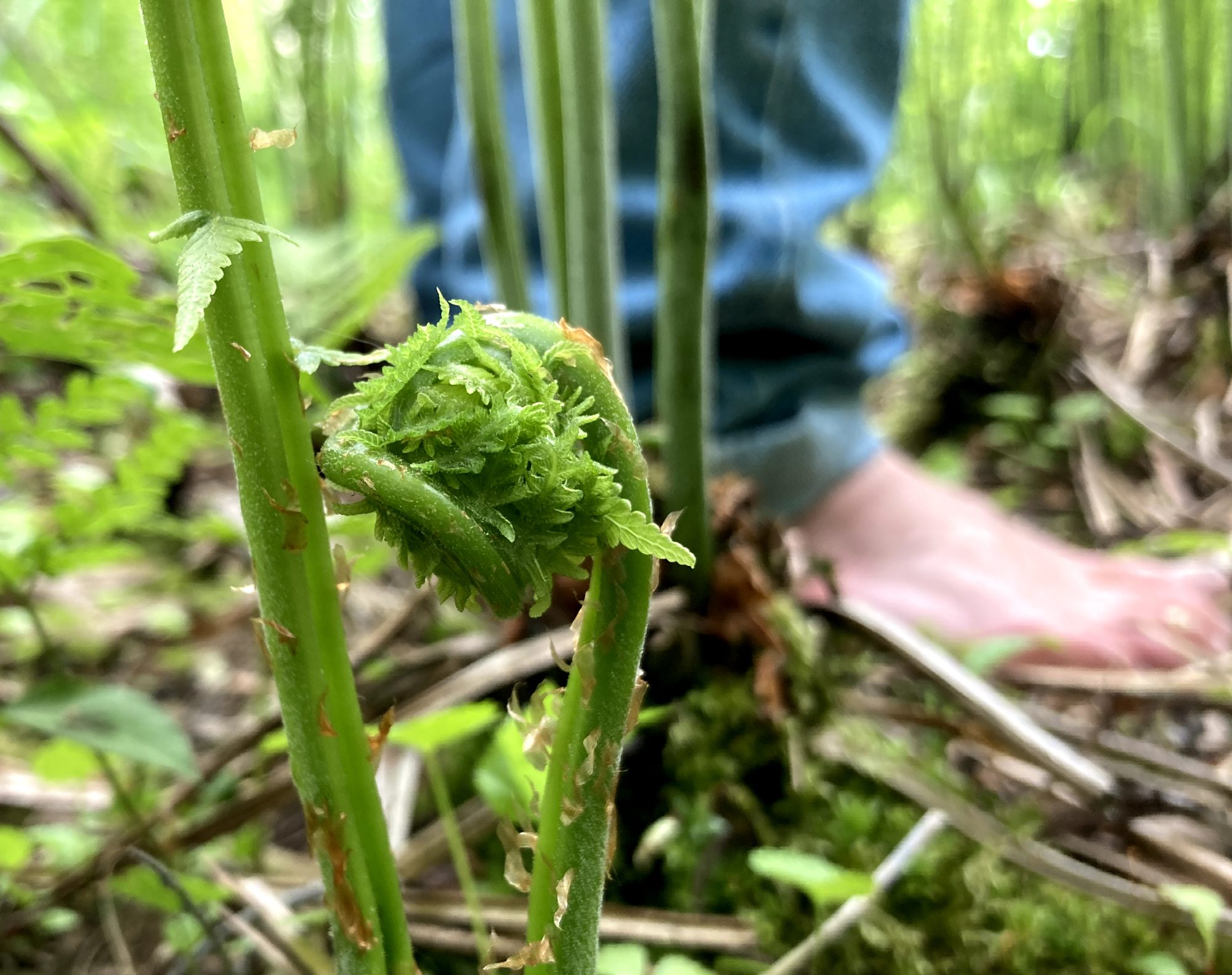
Blissful summer day. Poor year for chanterelles, even in this spot that’s been so abundant the last few years–this spot I’ve visited so many times, but always have to stumble around to find again. I swear the whole shape of the land changes every time; the cliff face gets closer or farther away, and the bend in the trail that tells me to head downhill disappears or doubles. It’ll rain tomorrow, and my dad & daughter friends, who I’ll try to guide here by text while I pay the bills at home, will find a marvelous harvest of all kinds of fungi. Today, though, it’s me and my three-year-old companion, who insists on being carried back to the car while he holds the basket containing our three or four mushrooms.
Just before we get out of the woods, I see a few little trees off the trail, their branches covered with clusters of little, round, bright red berries. Definitely not in any of the forms I’m familiar with from highbush cranberry, honeysuckle and bittersweet. It has to be prickly ash, which I’ve been wanting to find and try this year, especially since reading ForagerChef’s posts on the plant. The vicious-looking thorns, leaf pattern, size and bark color are all right, and a few minutes of checking sources while my kiddo complains makes me certain enough to loosen a few berries, rub them between my palms, and swooning when I breathe in the spicy citrus scent. I try one, and an amazing, complex flavor covers my tongue, which almost immediately starts tingling, just like it should. I offer some to Miksa. “These are de-LICIOUS.” We each eat a handful as if they were plump, sweet and juicy, instead of grainy, weird and magical, and then I drive home with my mouth completely numb, perfectly happy with the outcome of our foray.
A couple of weeks later I find a lot more at a beloved county park that I’ve visited to harvest an humbling quantity of wild plums. While I’m picking up plums from the edge of one grove, an Asian woman comes around the corner with her two young sons, who immediately run up to help me gather fruit. We all talk for a while, and, as we’re finishing up, I think to offer them a taste of the prickly ash berries I’d bagged up earlier. The woman tastes a few, and her face brightens. “This is my hometown! It tastes like Szechaun.”
Zanthoxylum americanum is indeed a close relative of the Szechuan peppercorn, and, in fact, you’ll sometimes find it just sold as “prickly ash” in Chinese grocery stores. It’s our only native member of the Rutaceae (citrus) family, and it’s delightful that it’s a native plant, since it’s so widely despised, forming thick and vicious thickets along pasture and field edges (and probably performing some valuable roles there for our own human purposes, like dissuading some animals from moving from one area into another and browsing on things we’d rather have them leave alone; I don’t know this–I’m just guessing).
In any case, prickly ash does provide a wonderful, unique citrus flavor that you don’t generally find among Midwestern native plants. I love its fresh and numbing aspect, as well as its more peppery flavor once it’s been dried and ground. Look around for some proper Chinese recipes, and you’ll find countless uses for this spice. So far, I’ve enjoyed it the most sprinkled on stir-fried meat and veggies, especially in homemade kimchi–as well as in my favorite hot sauce of the 2021 season, with Thai chilies, lemongrass and dehydrated kimchi ground into a spice powder. It’s also been a revelation as part of a subtle spice mix suggested for Pao Cai, a traditional Chinese ferment described in Sandor Katz’s gorgeous recent book . I want to use it everywhere.
